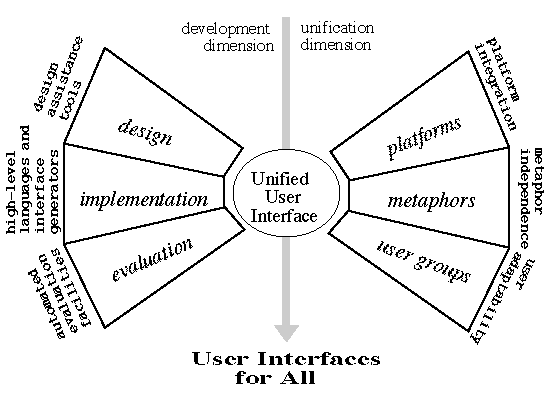

by Constantine Stephanidis
The evolution of technology has offered many new approaches and techniques in the field of human-computer interaction. However, mainstream developments have foc used on the needs of the average able-bodied user. Recent efforts to exploit such technological developments in the assistive technology field have been conducted in a fragmented way and the requirements of people with disabilities have been addressed ad hoc, mainly on a case-by-case basis. No systematic effort has been devoted to addressing user interaction problems from a perspective that provides access for 'all' users, including disabled and elderly people. The concept of 'User Interfaces for All' has been proposed, following the principles of 'Universal Accessibility' and 'Design for All', as the means to ensure user interface accessibility in terms of addressing the individual user abilities, requirements and preferences. Unified User Interface Development (UUID) has been defined as the vehicle to efficiently and effectively serve the goal of User Interfaces for All.
The principle of UUID involves the unification of several aspects of user interface design and development (see figure) and requires that only a core of the user interface is developed, while platform-, interaction metaphor- and user-specific interface properties are handled automatically by special purpose tools. In this respect, UUID guarantees that the user interface of an application, or telematic service will not require re-design and customisation to cater for the requirements of different user groups, or be tightly coupled to a specific interaction metaphor (eg desktop), or technological platform (eg MS-Windows, X-Windows).
UUID proposes that a single user interface is developed, composed of dialogue components encompassing interaction properties, which address various user requirements and dialogue styles; knowledge-based tools are employed to select and activate, during interaction, those dialogue patterns, which are most appropriate for the target end user abilities, requirements and preferences. Evidently, in order to practically achieve UUID, appropriate tools are required that fully support the notion of unification throughout the design and development stages of the traditional user interface life-cycle.
In this context, a complete user interface development environment has been designed and implemented at ICS-FORTH, which is software and hardware platform-independent. This environment can be used to construct interfaces adapted to the individual user characteristics, abilities and preferences, and includes:
The USE-IT tool
This tool combines knowledge about user requirements, abilities and preferences, and is aware of some of the characteristics of the application domain. It also contains a model of the physical level of interaction inclu ding interaction objects, input and output devices. The tool uses these knowledge sources to make decisions concerning the most appropriate selection of input/output techniques and devices for individual user requirements.
The PIM tool
This tool is used to produce toolkits for interface development. The distinctive property of these toolkits is that they can be used for the development of interfaces in a way which unifies diverse constituents of human-computer interaction. At run-time the toolkits automatically read and apply the specific decisions which have been produced by the USE-IT tool. Consequently, the PIM tool can be seen as producing interface toolkits which support unified interface development.
The G-DISPEC tool
A high-level formal language for the specification of user interfaces, enabling the unified description of dialogues for the various target user groups.
G-DISPEC incorporates notational facilities for describing user-oriented knowledge and supports abstraction facilities for designing platform independent unified dialogue constructs.
The I-GET tool
Currently, interface development forms the largest part of the overall system development process. Techniques to reduce implementation time, which also support more intensive testing-and-modification cycles, will produce quality interfaces. The I-GET tool serves the important role of providing interface developers with appropriate facilities, by supplying them with a higher level language for interface specification, and by automatically generating the implementation. The I-GET tool provides unified interaction constituents and adaptability of the resulting interfaces. These interfaces also apply the decisions provided by the USE-IT tool at run-time.

Overview of unification dimensions
The principle of UUID and the related tools and methodologies have the potential of penetrating the traditional, mainstream user interface development market, as they offer application developers and telematic services providers the opportunity to take advantage of the pluralism of available graphical environments and operating platforms; at the same time, they reduce the cost of user interface development for multiple systems, while catering for a multiplicity of target user groups.
The UUID work has been carried out at ICS-FORTH, in the context of the ACCESS TP 1001 project, partially funded by the TIDE program of the European Commission.
Please contact:
Constantine Stephanidis - ICS-FORTH
Tel: +30 81 391741
E-mail: cs@ics.forth.gr